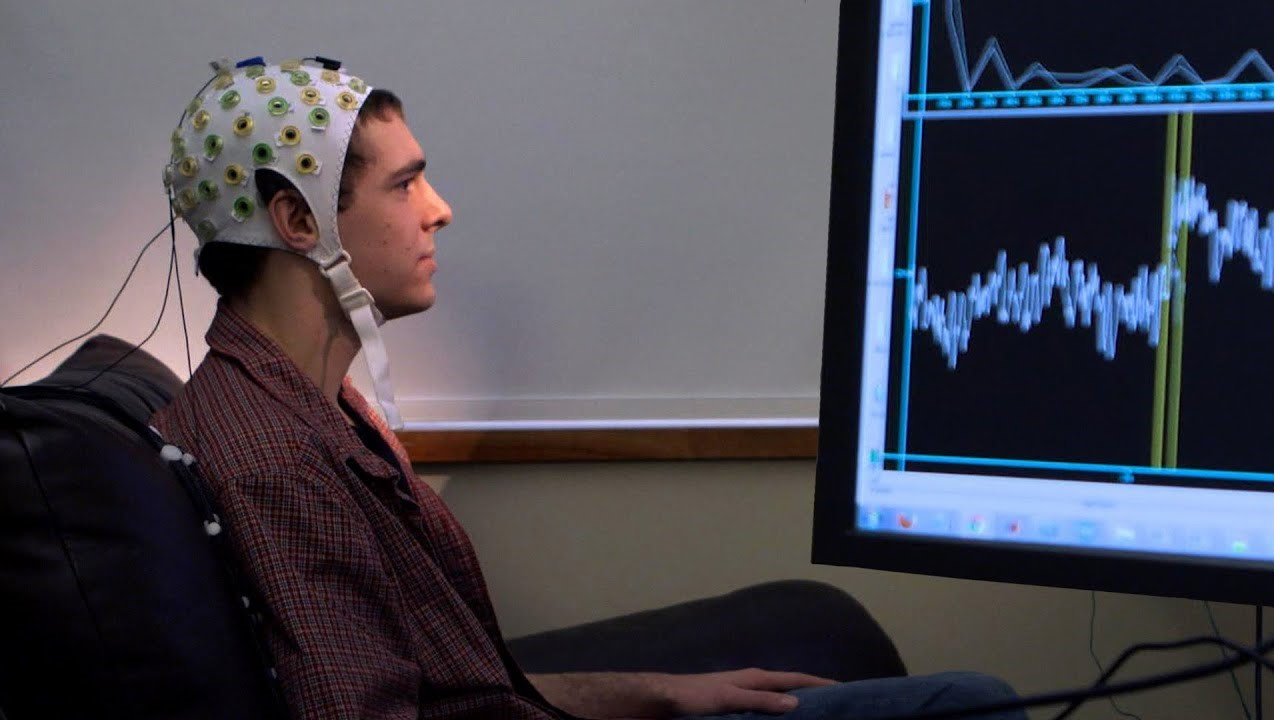How to Implement Mind-Machine Interfaces for Improved Communication in 2023

In the ever-evolving landscape of technology, one of the most exciting frontiers is the development and implementation of Mind-Machine Interfaces (MMIs). MMIs bridge the gap between human thought and external devices, offering the potential for revolutionary improvements in communication and control. In this Article, we will explore the fascinating world of MMIs, discuss their potential benefits and drawbacks, and provide insights on how to implement them effectively for improved communication.
Understanding Mind-Machine Interfaces

What are Mind-Machine Interfaces?
Mind-Machine Interfaces, often referred to as Brain-Mind-Machine Interfaces or Brain-Computer Mind-Machine Interfaces (BCIs), are technologies that enable direct communication between the human brain and external devices, such as computers, robots, or prosthetic limbs. These interfaces translate neural activity into actionable commands, allowing individuals to control machines or communicate without using traditional means like speech or physical gestures.
How do Mind-Machine Interfaces Work?
Data Acquisition
MMIs begin by collecting neural signals from the brain. This can be done through various methods, including electroencephalography (EEG), invasive implants, or functional magnetic resonance imaging (fMRI).
Signal Processing
The collected neural data is processed to extract meaningful information. Advanced algorithms decode the neural patterns, identifying specific brain activity patterns associated with different intentions or actions.
Command Generation
Once the neural signals are decoded, they are used to generate commands for external devices. These commands could involve moving a cursor on a computer screen, controlling a robotic arm, or even speaking through a speech synthesis system.
Positive Sentiments
Empowering People with Disabilities
One of the most significant benefits of MMIs is their potential to empower individuals with severe physical disabilities. MMIs can help people regain lost functionality, communicate more effectively, and improve their overall quality of life.
Enhanced Communication
MMIs offer a new level of communication for individuals who may have difficulty expressing themselves verbally or through traditional means. This can be especially valuable for those with conditions like ALS or locked-in syndrome.
Negative Sentiments
Ethical Concerns
The ability to directly access and manipulate the human brain raises numerous ethical questions. Privacy concerns, the potential for misuse, and questions about who has access to a person’s thoughts and intentions are among the most pressing ethical dilemmas.
Complexity and Reliability
Current MMI technology is still in its infancy, and it can be complex to set up and use effectively. Additionally, the reliability of MMIs can be a concern, as the accuracy of neural signal decoding may vary among individuals.
The Potential Applications of Mind-Machine Interfaces
MMIs have a wide range of potential applications that can significantly impact various aspects of our lives.
Medical and Healthcare
Assistive Devices
MMIs can provide enhanced control over prosthetic limbs and wheelchairs, offering greater independence to individuals with physical disabilities.
Communication Aid
They can enable individuals with conditions like ALS or paralysis to communicate more effectively through text or speech synthesis devices.
Gaming and Entertainment
Immersive Gaming
MMIs can revolutionize gaming by allowing players to control characters and environments with their thoughts, providing a more immersive experience.
Virtual Reality
In virtual reality applications, MMIs can enhance user interaction, making it more intuitive and responsive.
Education and Training
Enhanced Learning
MMIs can be used to create more immersive and engaging educational experiences, allowing students to interact with digital content using their thoughts.
Skill Acquisition
In training scenarios, MMIs can facilitate the learning of complex skills, such as piloting aircraft or performing surgery.
Implementing MMIs Effectively

Research and Development
Advanced Neural Signal Processing
Invest in research to improve the accuracy and speed of neural signal processing algorithms. This will result in more reliable and responsive MMIs.
User-Friendly Mind-Machine Interfaces
Develop user-friendly software and hardware Mind-Machine Interfaces to make MMIs accessible to a wider range of users.
Ethical Considerations
Privacy Protection
Implement robust privacy protection measures to ensure that neural data remains confidential and secure.
Informed Consent
Obtain informed consent from users, explaining the potential risks and benefits of using MMIs.
Training and Support
User Training
Provide comprehensive training to users to help them adapt to and effectively use MMIs.
Technical Support
Offer ongoing technical support to address any issues or challenges users may encounter. The future of implementing mind-machine interfaces (MMIs) for improved communication holds significant promise and potential, with a range of possibilities and implications. MMIs aim to establish a direct link between the human brain and external devices, allowing for more seamless and efficient communication. Here are some key aspects to consider when discussing the future of MMIs for communication:
Enhanced Communication for People with Disabilities
MMIs have the potential to revolutionize communication for individuals with disabilities, such as those with locked-in syndrome, ALS, or severe spinal cord injuries. They can provide a means for these individuals to express themselves and interact with the world more effectively.
Efficient Brain-Computer Mind-Machine Interfaces
Advancements in brain-computer Mind-Machine Interfaces (BCIs) will lead to more efficient and accurate communication channels. This could mean faster typing, more natural control of prosthetic limbs, or even the ability to control multiple devices simultaneously with thought.
Real-Time Translation
MMIs could enable real-time translation of thoughts and ideas into different languages, making global communication more accessible and efficient. This has the potential to break down language barriers and foster cross-cultural understanding.
Telepathic Communication
While this is still largely in the realm of science fiction, the future may bring us closer to telepathic communication. MMIs could enable direct communication between individuals’ thoughts, allowing for extremely private and efficient conversations.
Brain-Cloud Mind-Machine Interfaces
There may be developments in MMIs that enable a direct connection between the human brain and cloud-based systems. This could allow individuals to access vast amounts of information and computing power directly from their thoughts, significantly expanding their cognitive abilities.
Medical Applications
Beyond communication, MMIs can have significant medical applications, such as assisting in the control of prosthetic limbs, managing chronic pain, or even treating mental health conditions by monitoring and modulating brain activity.
Ethical and Privacy Concerns
As with any technological advancement, MMIs raise important ethical and privacy concerns. Questions about data security, consent, and the potential for misuse must be addressed as this technology develops.
Regulatory Challenges
Developing regulatory frameworks for MMIs will be crucial to ensure safety and efficacy. Balancing innovation with responsible oversight will be an ongoing challenge.
Accessibility and Equity
Ensuring that MMIs are accessible to all, regardless of socioeconomic status or geographic location, is a vital consideration for the future. This technology should not exacerbate existing inequalities.
Research and Development
Investment in research and development will be essential to unlock the full potential of MMIs. Governments, private companies, and academic institutions will need to collaborate to advance the field.
User Acceptance and Integration

Widespread adoption of MMIs will depend on user acceptance and the ability to seamlessly integrate these technologies into daily life. Designing user-friendly interfaces will be crucial.
Conclusion
Mind-Machine Interfaces hold immense potential for improving communication, enhancing the quality of life for individuals with disabilities, and revolutionizing various industries. While the technology is still in its early stages, ongoing research and development efforts are paving the way for more accessible and reliable MMIs. However, ethical considerations and user support must remain at the forefront of MMI implementation to ensure their responsible and safe use.
Read more : Best 20 Budget-Friendly Countries to Visit in the World 2023
FAQs(Mind-Machine Interfaces)
Can anyone use Mind-Machine Interfaces?
While MMIs have the potential to benefit a wide range of individuals, their effectiveness may vary. Users must have the cognitive ability to generate and control neural signals effectively.
Are MMIs safe to use?
Current MMIs are generally considered safe when used as intended. However, ethical concerns and potential risks must be carefully considered and managed.
How accurate are MMIs in translating thoughts into actions?
The accuracy of MMIs can vary depending on factors such as the type of neural signal used, the user’s proficiency, and the specific application. Ongoing research aims to improve accuracy.
What ethical concerns surround the use of MMIs?
Ethical concerns include issues related to privacy, consent, potential misuse, and the implications of direct access to a person’s thoughts.
Are there any regulations governing the use of MMIs?
Regulations regarding MMIs are still evolving. It’s essential to stay informed about the legal and ethical considerations specific to your region.
Read more : How to Incorporate Genetic Engineering in Agriculture in 2023








One Comment